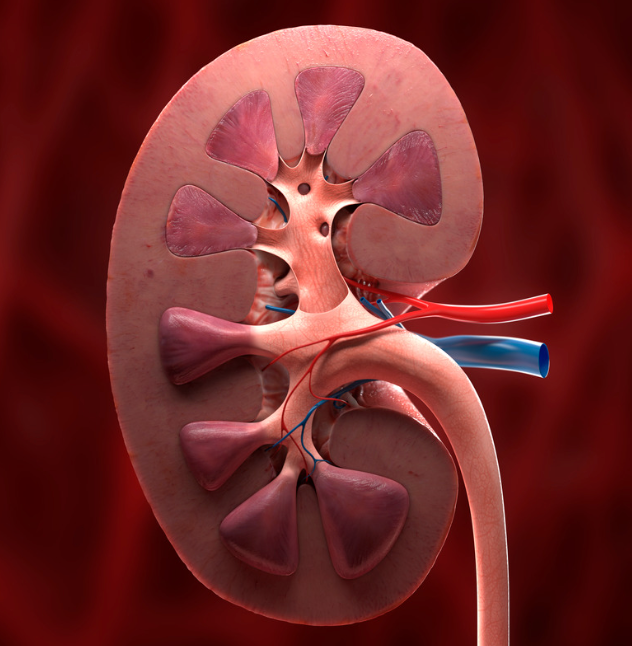Manageable AEs Noted in Belzutifan for Advanced RCC
“This is currently the largest pooled safety dataset for a HIF-2α inhibitor we need to be familiar with,” lead study author Toni K. Choueiri, MD.
“This is currently the largest pooled safety dataset for a HIF-2α inhibitor we need to be familiar with,” lead study author Toni K. Choueiri, MD.

Safety remained manageable when belzutifan (Welireg) was used for those with previously treated advanced clear cell renal cell carcinoma (RCC), according to a post-hoc pooled analysis presented at the 2024 Kidney Cancer Research Summit.1
Results showed that of the 576 patients included in the analysis, 99.3% had at least 1 all-cause adverse effect (AE) and 61.6% experienced at least 1 AE that was grade 3 to 5 in severity. Serious AEs occurred in 41.0% of patients. AEs led to dose modifications in exactly half of patients, and this included reductions, interruptions, or discontinuations. The treatment discontinuation rate due to AEs was 6.4%. Nineteen patients (3.3%) experienced an any-cause AE that led to death.
All-grade and grade 3 to 5 treatment-related AEs were reported in 91.3% and 37.7% of patients, respectively. One death, due to multiple organ dysfunction syndrome, was reported to be related to belzutifan therapy.
“This is currently the largest pooled safety dataset for a HIF-2α inhibitor we need to be familiar with,” lead study author Toni K. Choueiri, MD, who is director, Lank Center for Genitourinary Oncology, co-leader, Kidney Cancer Program, senior physician, Dana-Farber Cancer Institute, Jerome and Nancy Kohlberg Chair and professor of medicine, Harvard Medical School, said in an oral presentation during the meeting. “This is a new drug, with a new mechanism of action.”
Belzutifan, a first-in-class HIF-2α inhibitor, was first FDA approved in August 2021 for the treatment of patients with von Hippel-Lindau (VHL) disease–associated RCC, central nervous system hemangioblastomas, or pancreatic neuroendocrine tumors that do not immediately require surgery.2 It was subsequently granted FDA approval in December 2023 for those with advanced RCC who have previously received a PD-1/PD-L1 inhibitor and a VEGF inhibitor.3 The approved dosage of belzutifan is 120 mg once daily.
Because of its unique mechanism of action and a historically distinct AE profile, Choueiri, who is also a 2021 Giant of Cancer Care® in Genitourinary Cancers, said that investigators sought to evaluate belzutifan’s safety profile across 4 clinical trials: phase 1 LITESPARK-001 (NCT02974738), phase 3 LITESPARK-005 (NCT04195750), phase 2 LITESPARK-013 (NCT04489771), and the VHL-associated RCC cohort in the phase 2 LITESPARK-004 study (NCT3401788). Patients eligible to be included in the study had received at least 1 dose of belzutifan at 120 mg orally once daily across the 4 studies.
Investigators analyzed the severity of AEs via per the National Cancer Institute Common Terminology Criteria for Adverse Events version 4.03 or 5.0.
The breakdown of the 576 included patients were as follows from each trial: LITESPARK-001 (n = 58, including 3 patients with advanced solid tumors beyond RCC; 10.1%), LITESPARK-005 (n = 381; 66.1%), LITESPARK-013 (n = 76; 13.2%), and LITESPARK-004 (n = 61; 10.6%). LITESPARK-001 and LITESPARK-004 were both open-label, single-arm studies; LITESPARK-005 was a randomized controlled trial and LITESPARK-013 was a randomized 2-dose study.
Regarding baseline characteristics, the median age was 61 years (range, 19-90) and 35.8% of patients were 65 years and older. Moreover, 76.7% of patients were male. Patients had an ECOG performance status of 0 (48.3%), 1 (50.0%), or 2 (1.7%). Regions comprised Western Europe (39.2%), North America (38.4%), and rest of world (22.4%).
The most common all-grade and grade 3/4 AEs included anemia, which also comprised patients with decreased hemoglobin (all-grade, 84.2%; grade 3/4, 28.8%), fatigue (42.7%; 2.8%, respectively), nausea (24.1%; 0.9%), dyspnea (21.4%; 1.7%), and hypoxia (16.3%; 12.2%).
More specifically, anemia led to dose interruptions in 7.1% of patients, dose reductions in 3.8%, and treatment discontinuations in 0.3% of patients. The first time to onset to any-grade anemia was 29 days (range, 1-834). For hypoxia, these rates were 5.4%, 6.3%, and 1.4%; the time to first onset of any-grade hypoxia was 31 days (range, 1-952). For fatigue, these rates were 2.6%, 1.7%, and 0.2%; the time to first onset of any-grade fatigue was 42 days (range, 1-1017). For nausea, these rates were 2.4%, 0.3%, and 0.2%; the time to first onset of nausea was 43 days (range, 1-1346). For dyspnea, these rates were 1.7%, 0.5%, and 0.2%; the time to first onset of dyspnea was 57 days (range, 1-911). For dizziness, these rates were 1.6%, 0%, and 0.2%; the median time to first onset of dizziness was 49 days (range, 1-974). There were no dose interruptions, reductions, or treatment discontinuations due to increased weight; the median time to first onset of increased weight was 111 days (range, 4-671).
Of the patients who experienced anemia or decreased hemoglobin (n = 485), 22.9% were treated with an erythropoiesis-stimulating agent (ESA) alone, blood transfusions (17.5%), or both (12.8%); 31.3% received other treatment. The median time to onset of ESA use and ESA injections per patient was 85 days and 5, respectively, and the median duration of ESA use was 196 days. The median time to resolution of anemia was 70 days.
For those with hypoxia (n = 94), 70.2% of patients were treated with oxygen therapy; the median time to onset of supplemental oxygen treatment was 43 days, along with a median 9 days of supplemental oxygen. The median time to resolution of hypoxia was 11 days.
References
- Choueiri TK, Ghatalia P, de Velasco G, et al. Safety profile of belzutifan monotherapy in patients with renal cell carcinoma: A pooled analysis of 4 clinical trials. Presented at: 2024 Kidney Cancer Research Summit; July 11-12, 2024; Boston, MA.
- FDA approves belzutifan for cancers associated with von Hippel-Lindau disease. News release. FDA. August 13, 2021. Accessed July 12, 2024. https://www.fda.gov/drugs/resources-information-approved-drugs/fda-approves-belzutifan-cancers-associated-von-hippel-lindau-disease
- FDA approves belzutifan for advanced renal cell carcinoma. FDA. December 14, 2023. Accessed July 12, 2024. https://www.fda.gov/drugs/resources-information-approved-drugs/fda-approves-belzutifan-advanced-renal-cell-carcinoma